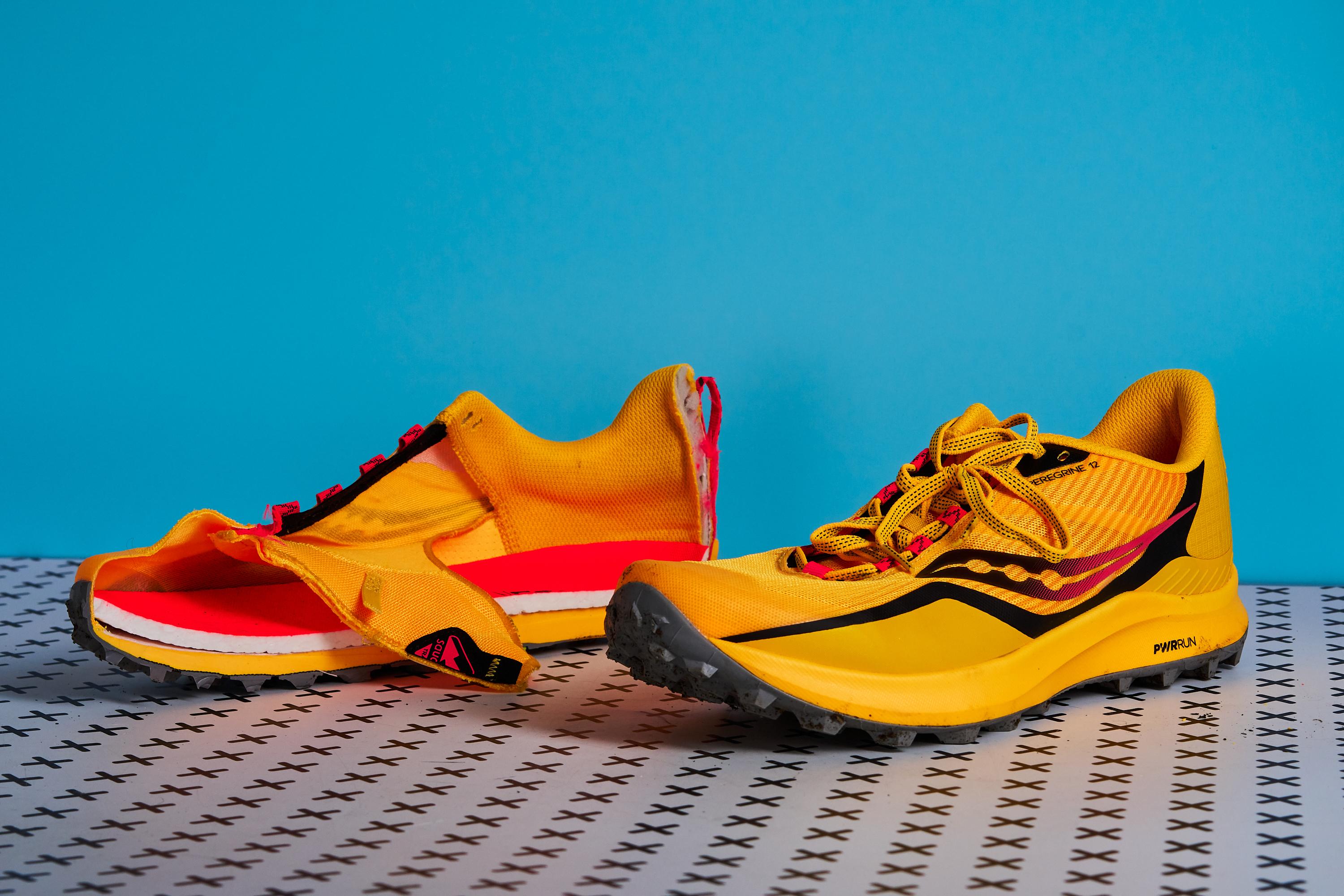Our verdict
Pros
- Fits true to size
- Grip is great in good conditions
- Great cushioning
- Excellent lockdown
- Lightweight
- Breathable
- Chart-topping laces
- Vibrant looks
Cons
- Need to keep the same insoles for proper cushioning
- Some discomfort from overlays
Audience verdict
Comparison
The most similar running shoes compared
+ + Add a shoe | |||||
|---|---|---|---|---|---|
| Audience score | 86 Good! | 77 Decent! | 88 Great! | 90 Superb! | |
| Price | £130 | £130 | £130 | £135 | |
| Trail terrain | Technical | LightModerate | LightModerate | ModerateTechnical | |
| Shock absorption | - | Moderate | - | - | |
| Energy return | - | Moderate | - | - | |
| Arch support | Neutral | Neutral | Neutral | Neutral | |
| Weight lab Weight brand | 10.1 oz / 285g 9.6 oz / 272g | 9.4 oz / 266g 9.7 oz / 275g | 9.9 oz / 282g 9.9 oz / 280g | 10.2 oz / 288g 10.1 oz / 286g | |
| Drop lab Drop brand | 6.9 mm 4.0 mm | 3.7 mm 4.0 mm | 6.0 mm 6.0 mm | 4.4 mm 3.0 mm | |
| Strike pattern | Mid/forefoot | Mid/forefoot | Mid/forefoot | Mid/forefoot | |
| Size | True to size | True to size | Slightly small | True to size | |
| Midsole softness | - | Soft | Soft | Soft | |
| Difference in midsole softness in cold | - | Small | Small | Normal | |
| Plate | Rock plate | Rock plate | Rock plate | ✗ | |
| Toebox durability | - | Good | Decent | Very good | |
| Heel padding durability | - | Decent | Good | Decent | |
| Outsole durability | - | Good | Good | - | |
| Breathability | - | Moderate | Moderate | Moderate | |
| Width / fit | Wide | Medium | Medium | Medium | |
| Toebox width | - | Narrow | Wide | Medium | |
| Stiffness | Stiff | Moderate | Stiff | Stiff | |
| Torsional rigidity | - | Flexible | Flexible | Moderate | |
| Heel counter stiffness | - | Moderate | Flexible | Moderate | |
| Lug depth | 4.6 mm | 4.7 mm | 3.9 mm | 4.4 mm | |
| Heel stack lab Heel stack brand | 30.2 mm 26.5 mm | 29.5 mm 28.0 mm | 30.1 mm 29.0 mm | 30.1 mm 31.0 mm | |
| Forefoot lab Forefoot brand | 23.2 mm 22.5 mm | 25.8 mm 24.0 mm | 24.1 mm 23.0 mm | 25.7 mm 28.0 mm | |
| Widths available | NormalWide | NormalWide | NormalWide | Normal | |
| Season | - | All seasons | All seasons | All seasons | |
| Removable insole | ✗ | ✓ | ✓ | ✓ | |
| Orthotic friendly | ✗ | ✓ | ✓ | ✓ | |
| Ranking | #353 Bottom 46% | #328 Bottom 11% | #142 Top 39% | #37 Top 10% | |
| Popularity | #543 Bottom 17% | #129 Top 35% | #326 Bottom 12% | #300 Bottom 19% |
Size and fit
Size
Saucony Peregrine 12 fits true to size (15 votes).
Saucony Peregrine 12 Review and Lab Test
With a promise of flexible comfort, the Saucony Peregrine 12 is a low offset, versatile workhorse of a trail running shoe. There’s an excellent outsole, minimalist upper and reliable midsole, there’s loads to love about this shoe.
Who should buy the Saucony Peregrine 12
The Peregrine 12 is the perfect option for you if:
- You’re looking for a one-hit-wonder versatile trail shoe
- You want a shoe that can take you over marathon distances
Who should NOT buy them
I recommend looking for alternatives if you:
- want a softer footbed with no discomfort coming from the upper. In this case, check the Nike Terra Kiger 9 out.
- Need a waterproof shoe, look at the Nike Pegasus Trail 3 GTX.
The Peregrine 12 fit true to size
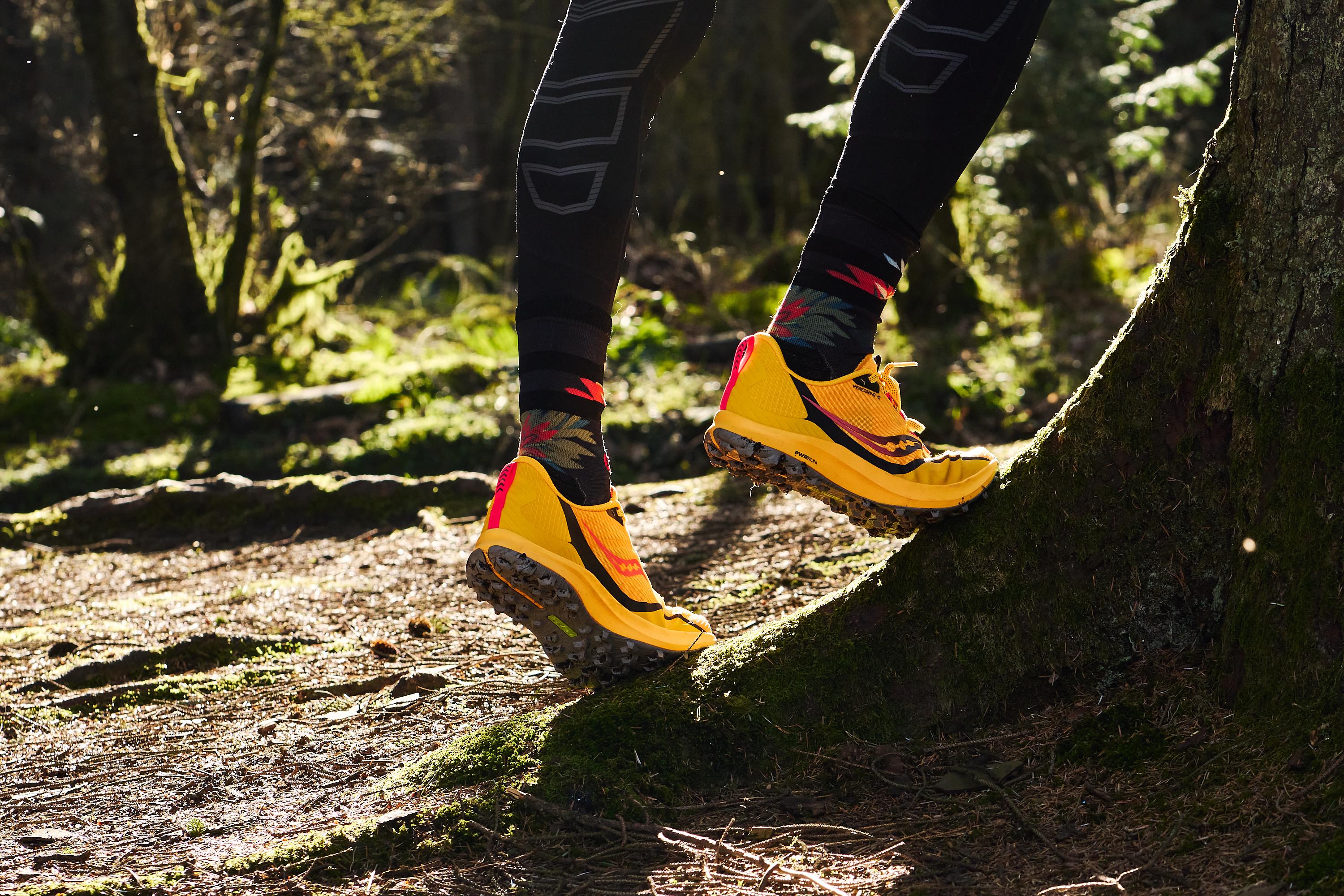
Fitting true to size the Peregrine 12 are a comfy, spacious shoe. With a nice, wide 104.9mm forefoot width in the upper, there’s lots of room for feet of all widths.
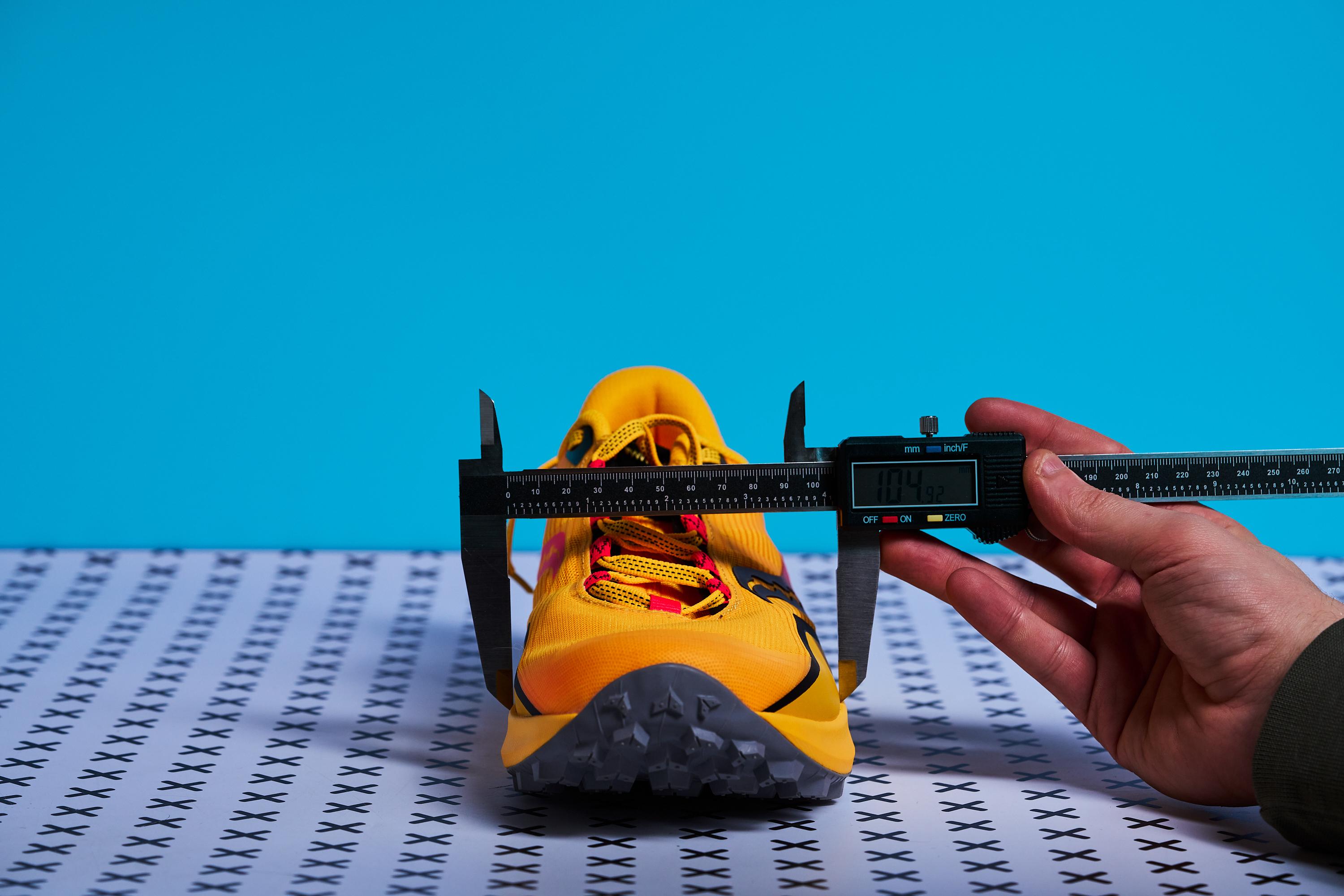
There’s a beautiful heel cup too which helps the lacing lock the foot in even if you’re on the narrow side. On a side note, the laces that came with the Peregrine 12 are some of the best tested, scoring 47.0N in the slip test (the average is only 23.3N).
A fresh approach to the midsole

In the past, the Peregrine has come with a ‘top sole’ sitting beneath the insole and above the midsole. After a while, this extra layer of padding would come apart from the shoe, leading to durability issues.

To solve this problem Saucony has replaced this with a super thick 7.2mm insole made of really soft foam.

This paired with the 44HA (average 41.4HA) durometer midsole that hasn’t changed across versions makes for a really comfy and cushioned trailer runner. I’d feel comfortable taking this on longer runs, maybe even above marathon level.
What I will say though, is that the reliance on a removable insole for cushioning is a bit of a design flaw in my eyes. This leads to an inability to use custom orthotics while getting the same protection which is never ideal
The peregrine 12 offers protection and flexibility
Underneath the midsole is a firm, fibre-weave rockplate that’s there to protect your forefoot from the beating of sharp rocks and sticks. Usually, these offer protection at the cost of flexibility, but with a flex score of 38.3N (average 29N), the Peregrine 12 is still form-fitting.

The result is a trail runner that can take on most surfaces, while feeling agile and comfortable all day.
The Saucony peregrine 12 are plenty grippy
The outsole of the Peregrine 12 has well-spaced, chevron lugs sitting at 4.6mm deep. The spacing means it’s really good at shedding mud, and can work on softer ground too.
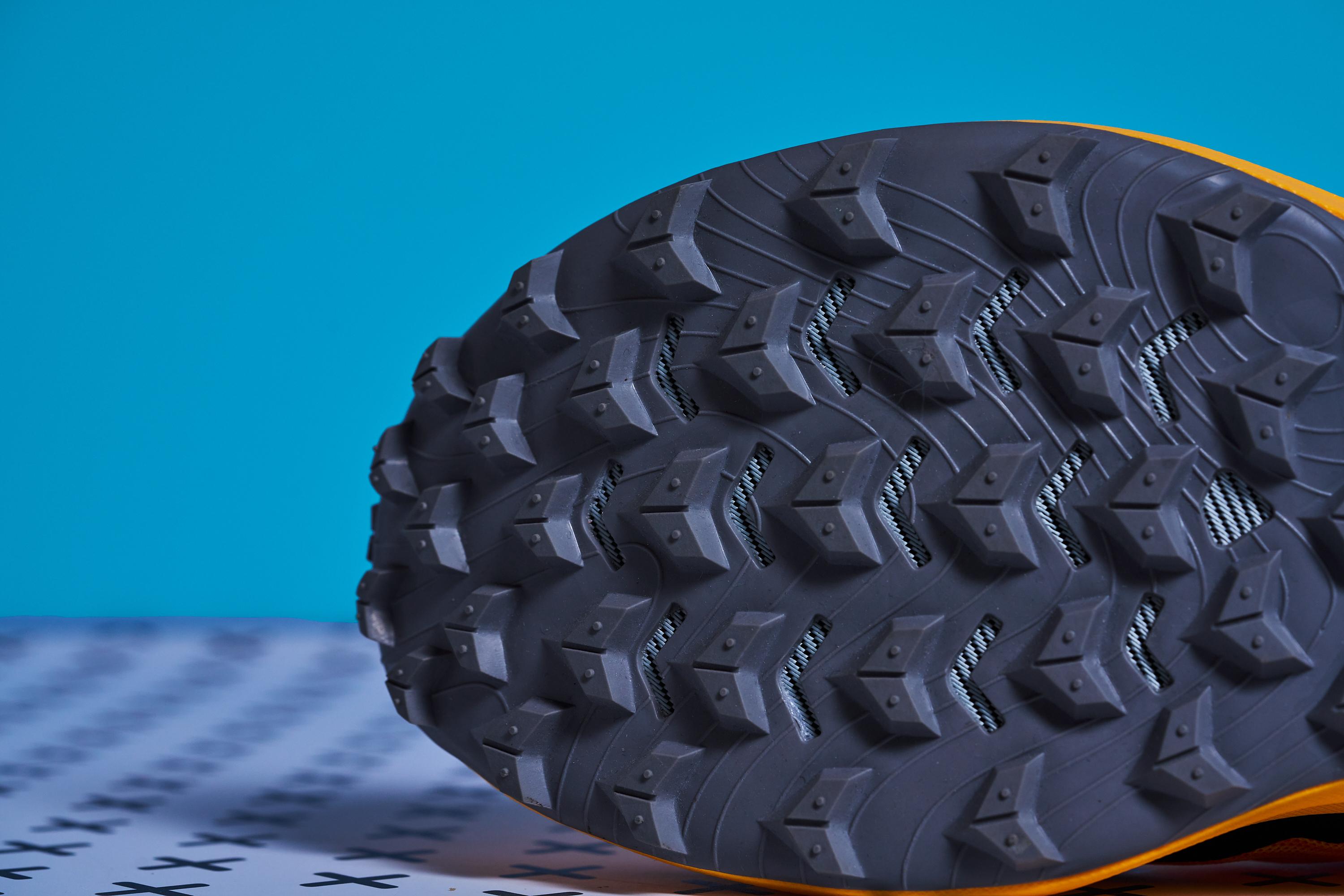
I do think that maybe they’ve moved towards the softer ground a bit because I felt a bit of slip on some of the harder surfaces.
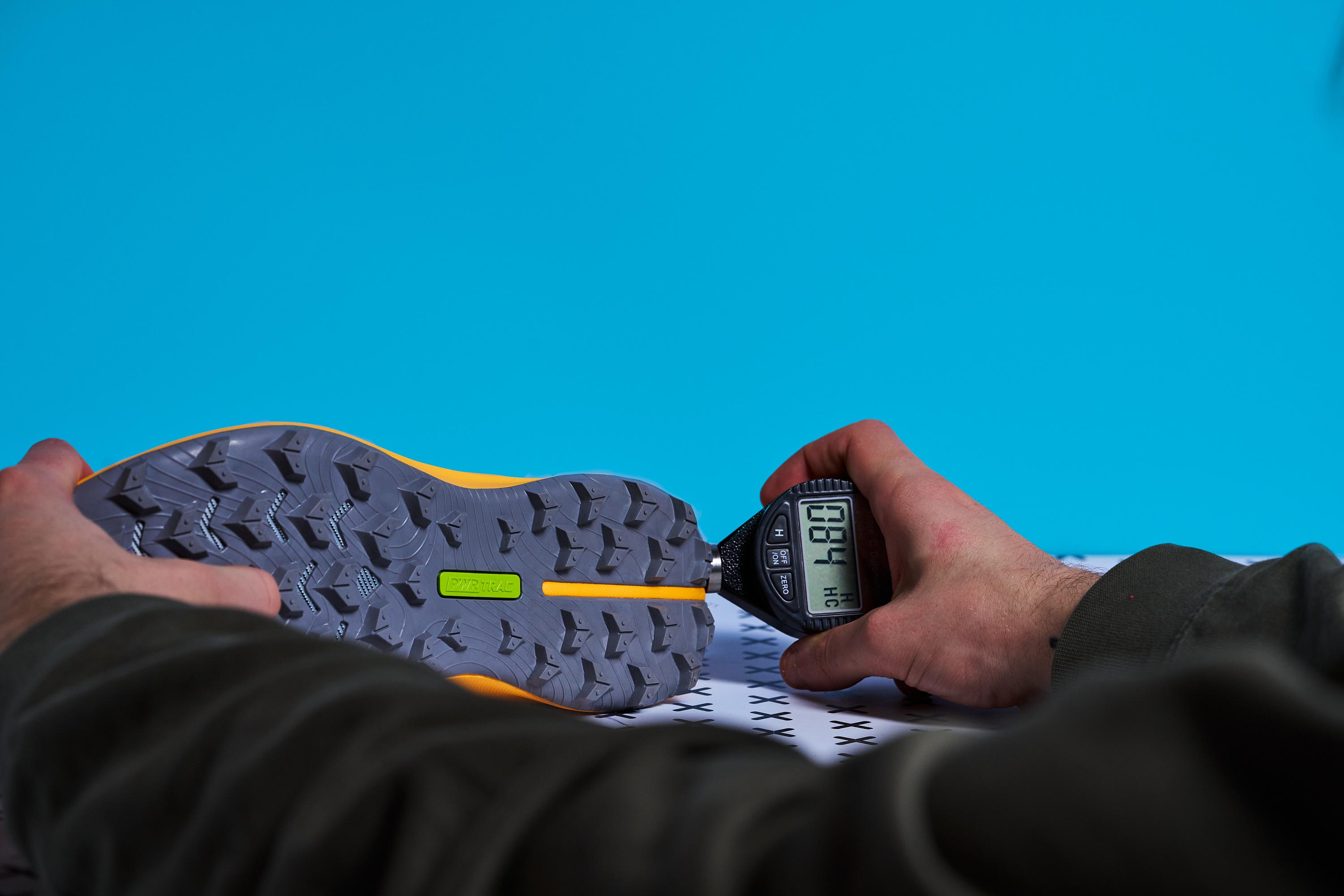
At 84HC durometer on the outsole, it’s quite a hard surface, making it particularly unforgiving if you;re taking on pavement for any length of time.
An upper that’s shed a load of the unnecessary
The rest of the Peregrine 12 seems like a really minimalist shoe. With a thin, 3.8mm tongue and lightweight overlays the Peregrine 12 comes in at 285g (mens size 10), which is a huge 33g lighter than the Peregrine 11.
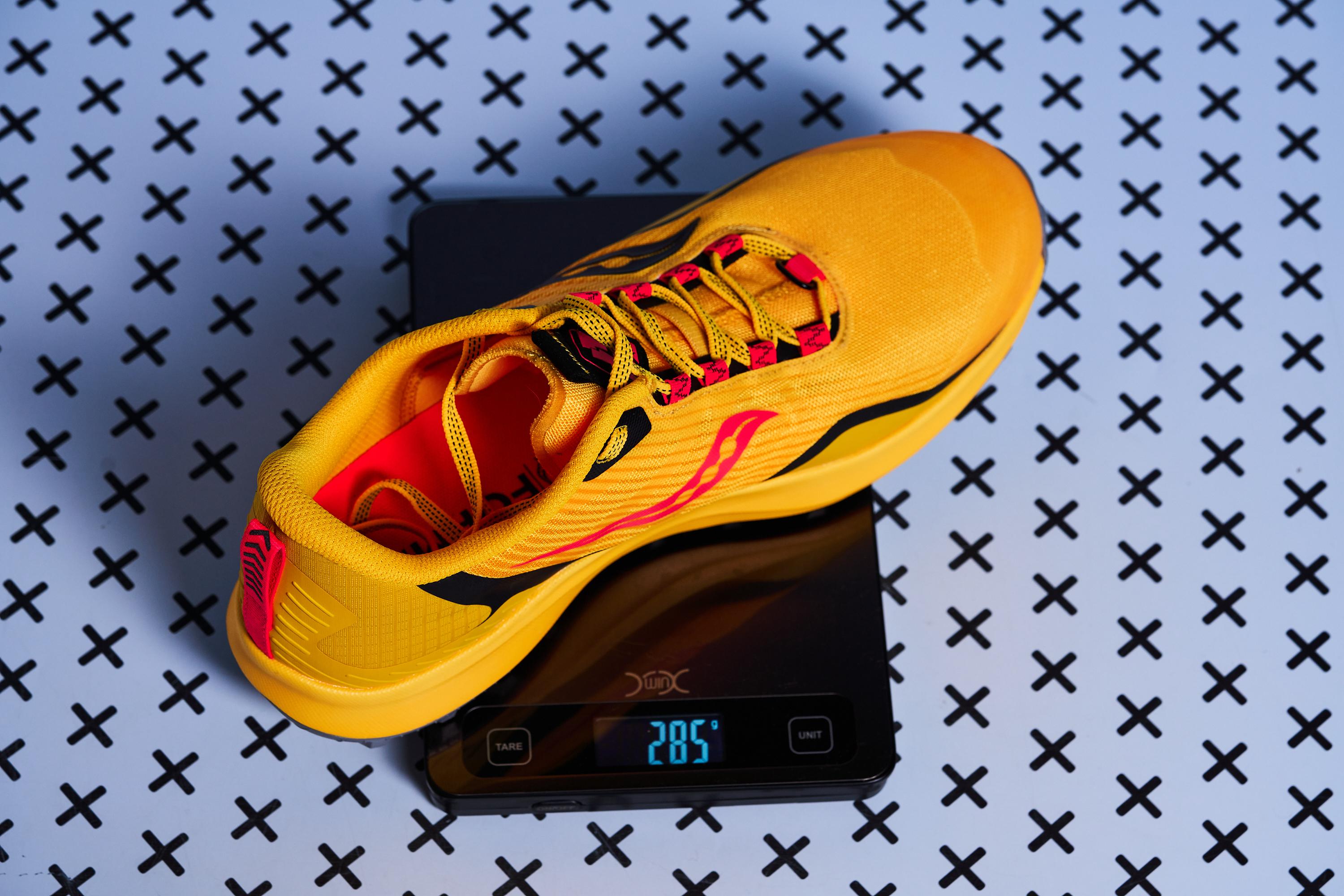
The shoe is breathable and hugs the foot really well. One thing that I did notice over longer distances, however, was the overlay across the toe box for protection would often push against my toenails. Maybe with a bit more breaking in it might improve, but it proved annoying on my runs.
Even a heel tab
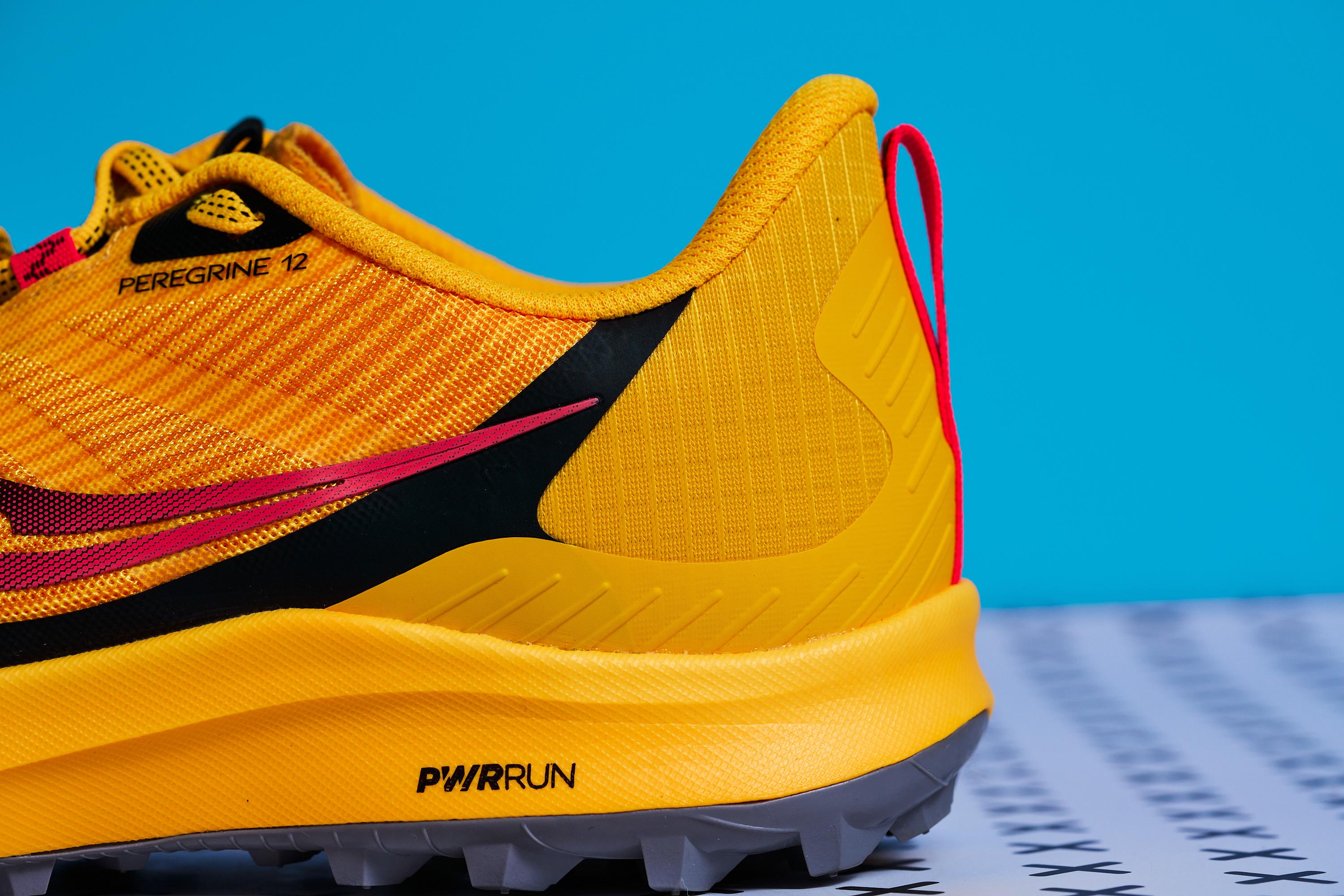
Maybe in a bid to shave more weight, or just a design choice, Saucony changed the heel pull tab to a more classic design. It doesn’t bother me too much either way as I just appreciate any trail shoe that has one.
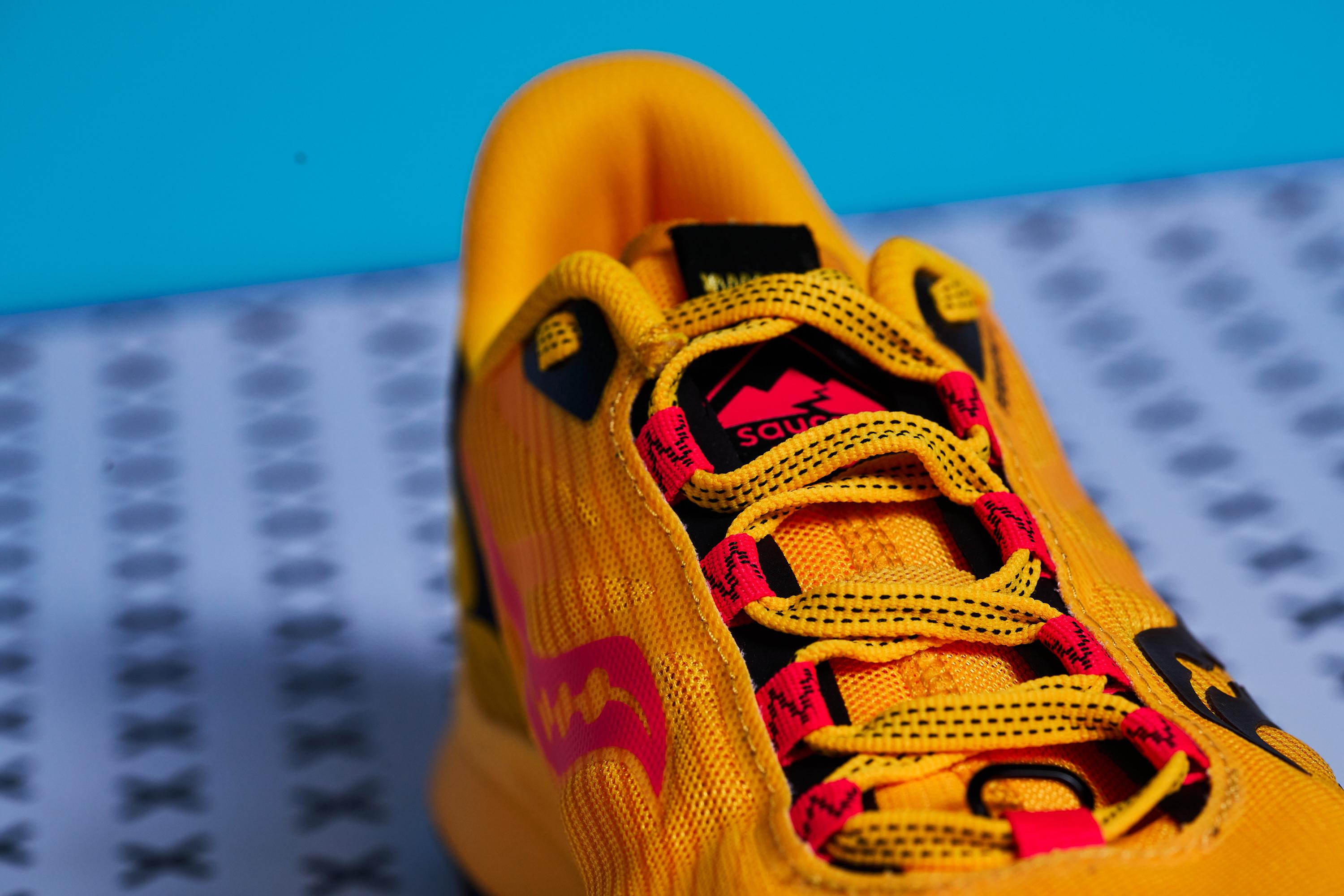
This, along with a clip for gaiters in the forefoot is just one of the nice touches that show Saucony's care for the little things that their runners need.
Conclusion
The Saucony Peregrine 12 is an all-round excellent shoe. With enough changes from the previous version to make it an attractive upgrade, this newly lightweight(ish) trail shoe has lots to offer and very few drawbacks.
|
Saucony Peregrine 12 |
Average |
|
|
Whole shoe |
||
|
Weight (g) |
285 |
276 |
|
Drop (mm) |
6.9 |
8.9 |
|
Flexibility of the shoe (N) |
38.3 |
29.0 |
|
Flexibility of the shoe (Freezer 20 min) (N) |
48.2 |
37.7 |
|
Flexibility of the shoe (% of change) |
25.8 |
31.5 |
|
Lace slip test with the knot (N) |
47 |
23.3 |
|
Longitudinal flexibility (1-5 scale, 5 being the stiffest) |
3.0 |
3.2 |
|
Torsional flexibility (1-5 scale, 5 being the stiffest) |
3.0 |
3.4 |
|
Upper |
||
|
Thickness - Tongue (mm) |
3.8 |
6.4 |
|
Width Upper - Forefoot (mm) |
104.9 |
98.6 |
|
Width Upper - Heel (mm) |
77.3 |
82.7 |
|
Lace Stretch (1-5 scale, 5 being the most stretchy) |
3.0 |
2.7 |
|
Flexibility of the heel counter (1-5 scale, 5 being the stiffest) |
3.0 |
3.0 |
|
Tongue: gusset type |
Full |
- |
|
Heel: pull tab |
Yes |
- |
|
Midsole |
||
|
Width Midsole - Forefoot (mm) |
111.3 |
112.0 |
|
Width Midsole - Heel (mm) |
83.2 |
89.2 |
|
Stack - Forefoot with insole (mm) |
23.2 |
23.9 |
|
Stack - Heel with insole (mm) |
30.2 |
32.7 |
|
Durometer Midsole Heel (Room temperature) (HA) |
44 |
41.4 |
|
Outsole |
||
|
Outsole thickness (Heel) (mm) |
5.2 |
3.7 |
|
Lugs Depth (mm) |
4.6 |
3.3 |
|
Durometer Outsole Heel (Room temperature) (HC) |
84 |
82.6 |
|
Insole |
||
|
Insole Heel Thickness (mm) |
7.2 |
4.5 |
|
Insole: removable |
Yes |
|

